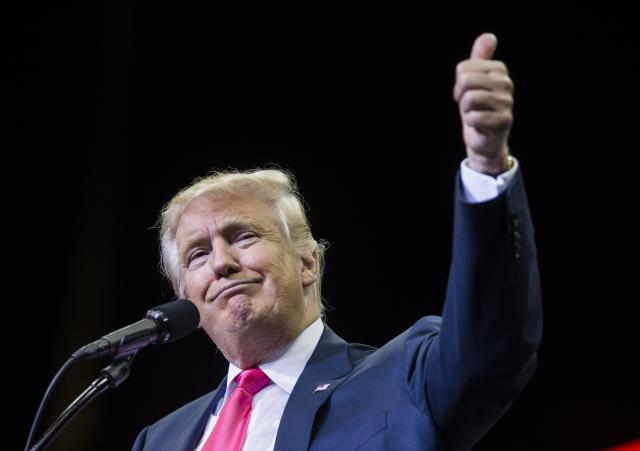ThinkProgress
Bracing for a Supreme Court attack, labor unions make plans to survive
“In a moment in which labor is under attack … we actually have to stand for more, not less.”

Ned Resnikoff January 18, 2018
The Supreme Court will hear oral arguments next month in a case that could bring about what city and state worker unions fear most: the imposition of a “right-to-work” legal regime across the entire American public sector.
In the states where they exist, so-called right-to-work rules make it illegal for unions to require “agency fees” (payments that cover the expense of bargaining on behalf of non-union members) from the non-members covered by contracts they negotiate. To unions and their allies, the fees help prevent what they call a classic “free-rider problem,” in which people benefit from a costly system without any incentive to pay into it. Without agency fees, non-union members of unionized shops can still benefit from the higher wages and benefits guaranteed by collective bargaining contracts — but they’re not required to keep those efforts financially afloat.
Eliminating unions’ ability to collect those fees threatens to put a big dent in their financial resources — and ratchets up the incentive for workers to forego union membership. The creation of a nationwide right-to-work regime could deal a massive blow to public sector unionism, the last bastion of relative union power following years of defeats in the private sector.
The petitioner in February’s Supreme Court case, Janus v. AFSCME, contends that compulsory agency fees violate his First Amendment rights to freedom of speech and association, in part because he is effectively being compelled to support a political organization. The court weighed a similar argument in the 2016 case Friedrichs v. California Teachers Association; at the time, it seemed poised to make labor’s right-to-work nightmare a reality. But Justice Antonin Scalia’s death unexpectedly delayed the legal reckoning. With Neil Gorsuch now occupying Scalia’s post, the day seems to have arrived.
Unions prepare for a setback
Some unions have already begun making plans for how they could survive — and perhaps even grow — in a right-to-work climate.
The first step is more aggressive internal organizing. If workers can no longer be expected to automatically pay for representation, the reasoning goes, then unions need to put more effort into winning them over. Some public sector unions have already begun reaching out to members and attempting to strengthen their investment in the cause.
“At the end of the day, we build stronger unions when members see themselves in the advocacy and the DNA of the union, and when we engage community,” said American Federation of Teachers President Randi Weingarten in prepared remarks for a speech at the October 2017 AFL-CIO convention in St. Louis, Missouri. “And that starts with conversation — listening and engaging. We’re focused on that kind of one-on-one engagement.”
The free-rider problem can also be dealt with by giving non-members fewer opportunities to free-ride. If workers can’t be compelled to subsidize union activities, argues University of California Berkeley law professor Catherine Fisk, then unions probably can’t be compelled into representing non-dues-payers. If members have exclusive access to union representation during grievance proceedings, that provides an incentive for workers to keep paying their dues.
“There are a few examples of unions in different states — in right-to-work states — that I believe have experimented with not handling individual grievances,” Fisk told ThinkProgress. Whether unions could (or should) also negotiate contracts exclusively on behalf of dues-paying members is a “harder question,” she added.
“It’s not obvious that a union would be better off negotiating only on behalf of its members,” she said. “Because they would be setting up the possibility that the non-members could get paid more than the union members, which would obviously prompt some members to resign their membership.”
But that assumes the presence of a contract. Workers could also organize “members-only” unions, which only represent their members, rather than all the employees in a given shop. Such unions tend to operate without any sort of collective bargaining agreement, meaning they need to find other ways to advance the interests of their workers. Century Foundation fellow Moshe Marvit, who co-authored a 2015 report on members-only unions with Leigh Anne Schriever, said that these pressures can force unions to perform “at their best” if they want to survive.
“One could go to them, almost, for best practices among unions: a lot of communication with the membership, a lot of volunteerism among the membership in terms of being involved with the union,” said Marvit. “Really just engaged and democratic, and it was out of necessity. Because the fact of the matter was they had to keep their dues low; they couldn’t charge a lot because they couldn’t guarantee a whole lot, and they had to use other mechanisms to push for concessions in the workplace.”
But a minority union, even one born out of legal necessity, can be a “hard thing to sustain,” said Marvit.
“If you get 20 or 30 percent of the workers on board and form a members-only union, you may not actually achieve a whole lot,” he said. “Because if the employers just insist that they’re not going to take your concerns seriously or bargain with you, or you don’t have some mechanism to bring grievances or use whatever state laws you can to kind of get your message out there, then you may not be able to get much.”
The members-only strategy might function best for public sector unions negotiating with a relatively sympathetic employer. The same also goes for more traditional, shop-wide unions.
“Bargaining for the common good”
For cities or states that want to keep their employees unionized — whether because of their overall liberal orientation, their desire to keep negotiations with employees over working conditions centralized and standardized, or both — there are a few other ways they could mitigate the effect of right-to-work, said Fisk. She cited the federal government’s policy of offering union representatives paid “release time” to conduct union business during work hours.
“Similarly, local governments could try to come up with ways to facilitate fee collection that don’t run afoul of right-to-work,” said Fisk. “And they might renegotiate a contract to say that grievances will be handled by qualified representatives of the employees own choice. […] You could even create some kind of fund that’s partially funded by employer contributions, partially by union contributions, like a prepaid legal services pension plan that then is available only to members, and that’s the fund used to pay for grievance arbitration.”

In cities and states that are less inclined to accommodate public sector unions, organized labor may need to turn to other sources of power in order to survive. A small but growing number of unions have found what they believe is a successful model for doing just that. Instead of limiting the scope of conflict with their employers, they’re partnering with other activists and community groups to formulate shared platforms that command support among union members and non-members alike. They call this strategy “bargaining for the common good.”
As an example of this model’s strength, advocates frequently point to St. Paul, Minnesota, where in 2013 the local teachers union began “convening regular meetings with parents and community members to formulate a shared vision,” according to The American Prospect’s Rachel Cohen. The union also invited community members to participate directly in bargaining sessions. Despite some initial resistance from the school district, the union and its allies won a series of contract items meant to benefit both educators and students, including an expanded preschool program and more non-teacher support staff, wrote former union president Mary Cathryn Ricker in a 2015 essay for Dissent. Ricker is now the executive vice president of the national American Federation of Teachers.
Georgetown University labor historian Joseph McCartin has argued that bargaining for the common good is a response tailor-made for the worst-case Janus scenario. McCartin told ThinkProgress that the strategy “takes the premise of what the Janus decision is likely to be — which is, I think, some variant of saying that anything a public sector union does is ultimately political — and goes with it.”
“Instead of contesting that, it says that it’s right because public sector unions have to fight for those things that are about preserving the services that they provide, that their members provide,” he said.
This strategy can also further engage and mobilize members who would not otherwise feel compelled to engage in collective action, said McCartin.
“I think for people who want to stay active in their unions they want to feel that that activism is for a greater cause than only defending their rights,” McCartin said. “While that’s an important part of it, defending what they have on the job, linking up with community allies is a way of keeping them tied into the mission of the union on a big scale.”
It also gives unions a chance to directly confront broader issues that have contributed to the decline of American organized labor. Bargaining for the common good, said McCartin, “tries to force to the bargaining table, in some form, the larger financial forces that are really setting the agenda for local government.”
To McCartin and other proponents of bargaining for the common good, the main adversaries of public sector unions aren’t the officials trying to reign in municipal budgets by cutting labor costs; they’re the financial giants, lobbyists, and other corporate interests who have forced such austerity measures by lobbying for tax cuts, persuading local governments to make dubious investments, and encouraging privatization of public goods.
“In many places, the vehicle through which our campaigns work is bargaining for the common good,” said Saqib Bhatti, co-executive director of Chicago-based activist group ACRE (Action Center on Race and the Economy). “Basically, bringing together community-labor coalitions that are using bargaining as a key moment to push forward demands around Wall Street accountability and racial justice.”
Bhatti believes folding those issues into public sector bargaining is only natural. “The reason why there’s not enough money to pay for public sector workers and why there’s a big attack on pensions and wages is the same reason why there’s not adequate funding for schools in black and brown neighborhoods,” he said.
Veteran labor organizer Stephen Lerner, now a fellow at Georgetown University’s Kalmanovitz Initiative for Labor and the Working Poor, said he has been surprised by how quickly the bargaining for the common good strategy has spread through the labor movement since 2014, when the Kalmanovitz Initiative —where McCartin is executive director — held a conference on the subject. Part of the appeal, said Lerner, is that it moves past the “almost transactional relationship” between labor and potential allies such as the civil rights movement.
“As the whole labor movement and progressive community have been under assault, people have really embraced the idea that this is now about, ‘We do something for you and then you do something for us later,’” said Lerner. “What we’re doing in bargaining for the common good is saying, ‘We’re doing something together.’”
That collaborative approach, Bhatti argued, is key to surviving in a post-Janusworld.
“It seems paradoxical, but in a moment in which labor is under attack, and in which we have fewer resources, in order to become relevant and stay relevant, we actually have to stand for more, not less,” he said.







 Voters Give Trump an F Grade for First Year in Office, Poll Shows
Voters Give Trump an F Grade for First Year in Office, Poll Shows



